Hands-free law update: Ohio & Michigan have prevented over 3,800 crashes with new laws
Distracted driving is down in Ohio and Michigan, but has grown in Alabama
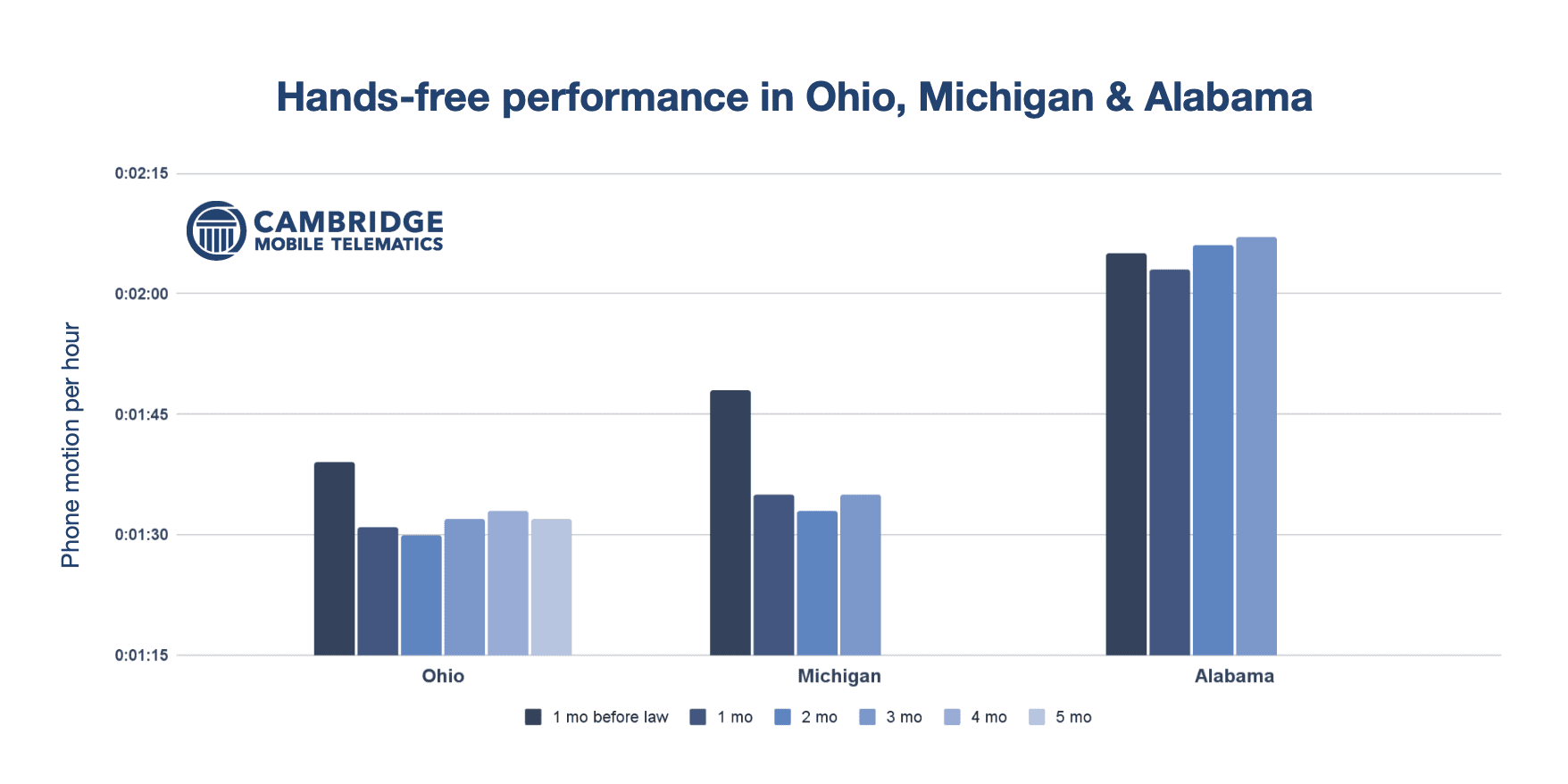
Hands-free laws have been proven to reduce distracted driving. But how long does the effect last? We analyzed the distracted driving performance in eight states that introduced hands-free legislation from 2018 through 2021. In the first three months after the laws were introduced, the average reduction in distraction was 13%. By the end of 2022, however, distraction was up by 3% in these states compared to the month before the law.
In the past few months, Ohio, Alabama, and Michigan have enacted hands-free laws. (Missouri just introduced a new law in late August. We’ll report on that another day.) To help road safety officials better understand the evolution of driving performance before and after hands-free laws, we’re publishing updates to our initial analyses for each of these states.
Each of these analyses uses phone motion as the distraction metric. Phone motion distraction happens when the phone screen is on and the phone is moving, indicating handheld use. Each analysis includes millions of trips across thousands of drivers in each state. The data is through September 5, 2023.
CMT’s research shows that every 10% increase in distracted driving raises the crash rate by 1.4%. We use this calculation in our crash, fatality, and economic damage estimates.*
Ohio: 7.5% reduction
Ohio introduced its hands-free legislation on April 4. The law makes distracted driving a primary offense. In the month leading up to the law, drivers in Ohio were distracted for 1 minute and 39 seconds. In the 30 days after the law, distraction fell by over 8%, dropping to 1 minute and 31 seconds. In the months afterward, distraction levels in Ohio fluctuated between 1 minute and 30 seconds and 1 minute and 33 seconds.
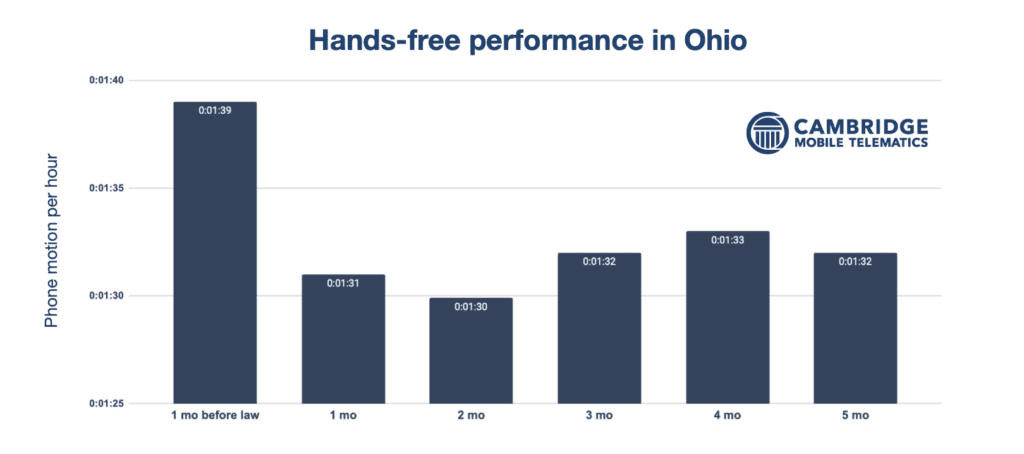
In the 150-plus days that Ohio has had a hands-free law, we estimate the law has prevented 2,200 crashes, saved six lives, and prevented over $54 million in economic damage.
Michigan: 12.7% reduction
Michigan began its hands-free law on June 30 and saw a quick drop in distraction. Like Ohio, distracted driving in Michigan is a primary offense. It is illegal for drivers to use their phones while driving unless it’s hands-free. In the 30 days after the law began, distraction in Michigan fell by 12% to 1 minute and 35 seconds per hour. In the second month, distracted driving was nearly 14% lower than it was in June.
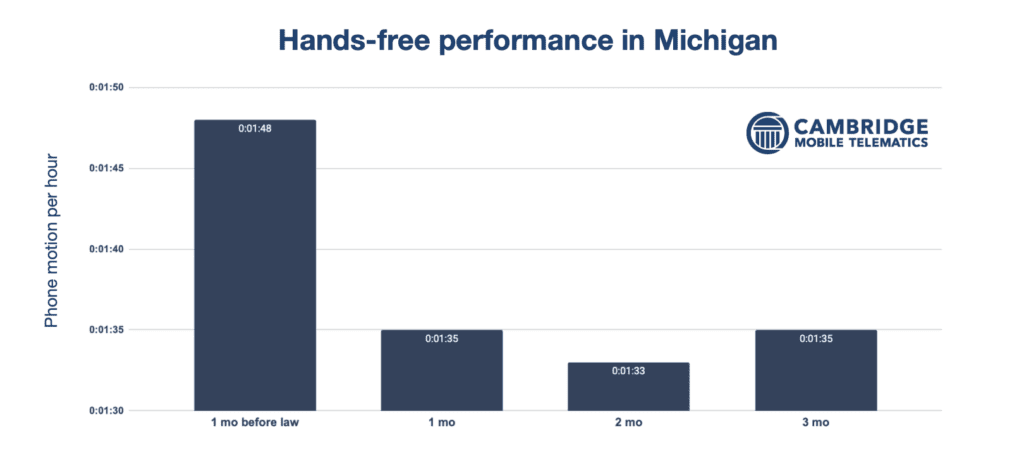
The law in Michigan has been running for over 65 days. We estimate that it’s helped prevent 1,600 crashes, four fatalities, and $38 million in economic damage.
Alabama: 0.3% increase
Alabama, unlike Ohio and Michigan, made distracted driving a secondary offense when it introduced its hands-free law on June 16, 2023. The difference between primary and secondary offenses is that police can’t give you a ticket for them. They need to see you breaking a primary offense first, making the law much more difficult to enforce.
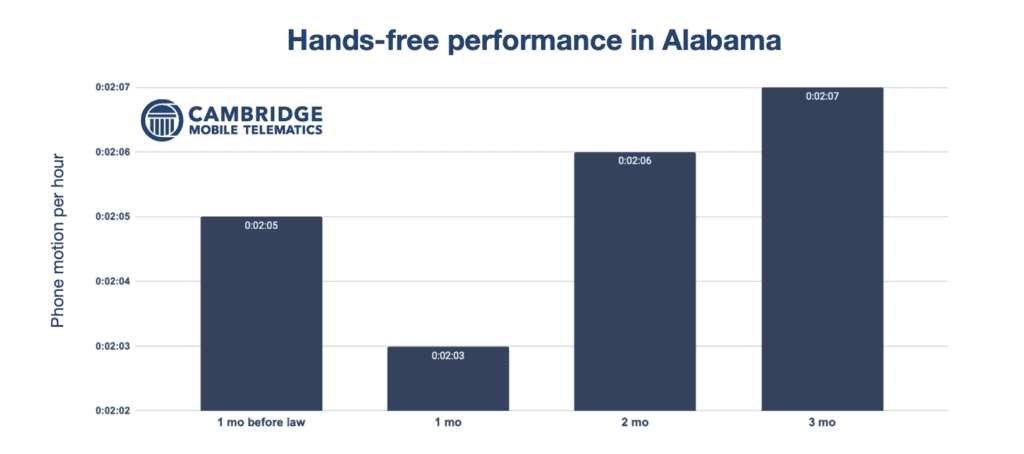
Distracted driving in Alabama fell slightly in the first month of the law. By the second month, however, distraction was already above levels prior to the law. By month three, distraction was 1.6% higher than before the law.
While distraction levels today are higher in Alabama, the first month was lower, and was able to reduce road risk. In that first month, we estimate that Alabama was able to prevent 70 car crashes and $1.6 million in economic damages. While the long-term performance in Alabama isn’t in line with Ohio and Michigan, these results show that even small improvements help reduce road risk and crashes.
A month-two drop?
A pattern may be emerging across hands-free performance. In both Ohio and Michigan, the lowest level of distracted driving occurred in the second month after the law began. The timing matches the surge in coverage in Ohio and Michigan on the performance of the laws. In Ohio, there were over 130 stories published about the initial drop in distracted driving and the prevention of crashes. Ohio Governor Mike Dewine tweeted about the results. Michigan saw over 20 articles about the hands-free bill performance after the first month. There was one article in Alabama.
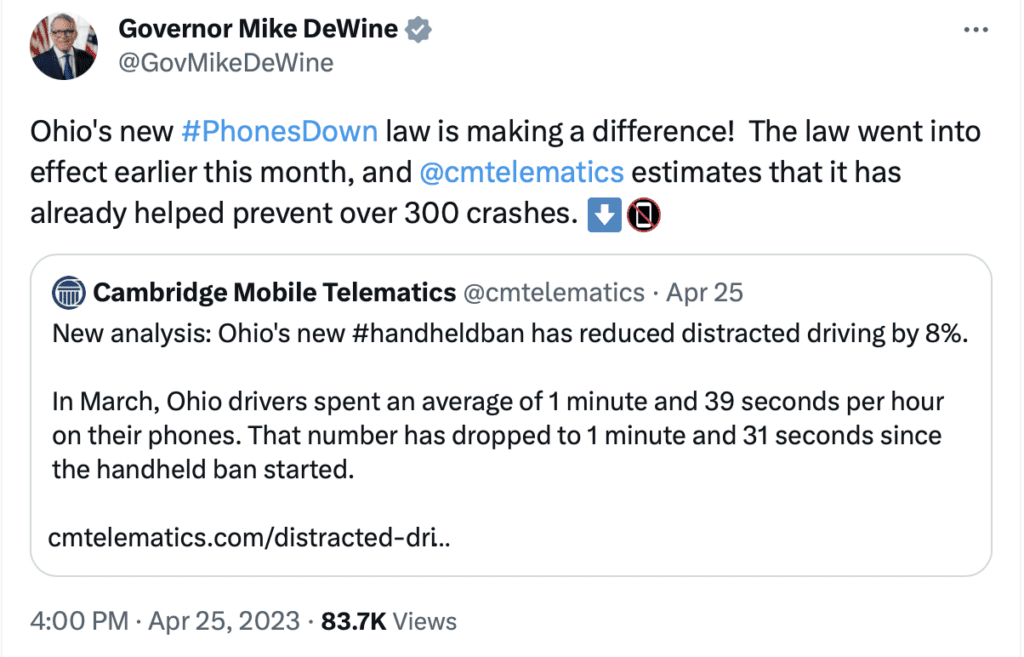
Awareness plays a key role in reducing distracted driving for states. Public awareness of the laws reaches its height the week the laws begin, which the media helps drive with a surge of coverage. Distracted driving drops quickly after the law begins and coverage is high.
The graph below shows how public awareness of hands-free laws converges when the law begins. Week 0 is when the laws go into effect for each state. The graph shows Google Trends data for searches for “phone law.”
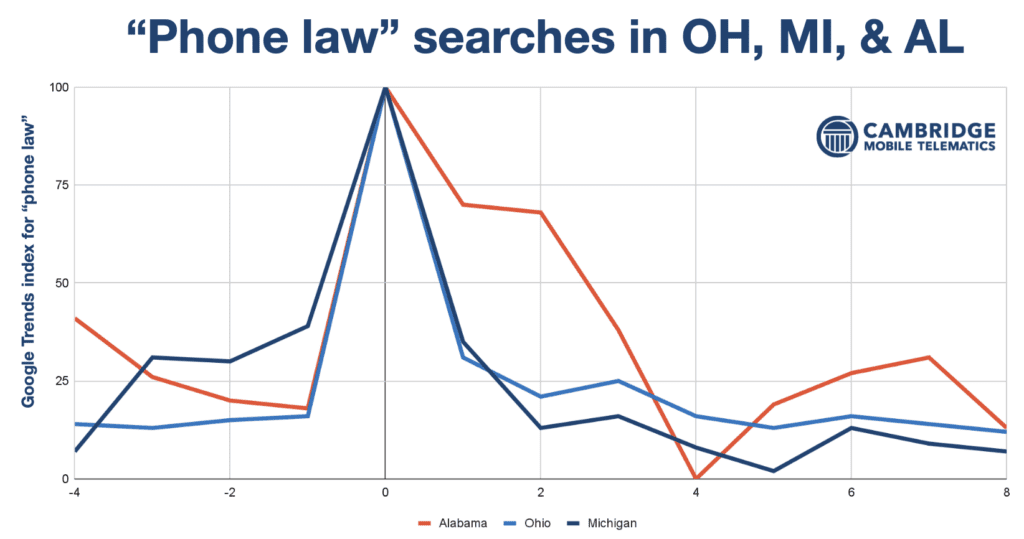
It’s possible that the drop in month two in Ohio and Michigan is related to the second surge of media coverage. Media coverage drives awareness, which has been shown to reduce distracted driving.
*Estimates based on the change in crash rate from distracted driving and data from NHTSA’s report The Economic and Societal Impact of Motor Vehicle Crashes, 2019: $340 billion in crash damages from 14.2 million crashes in 2019, averaging $23,954 per crash